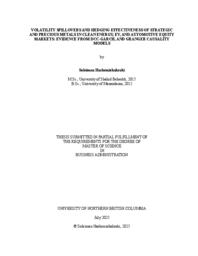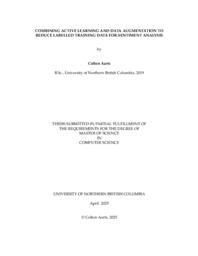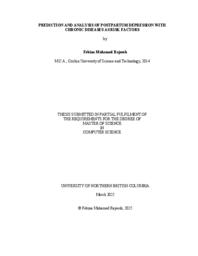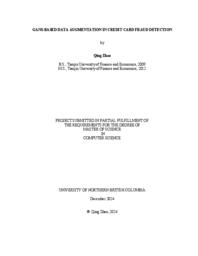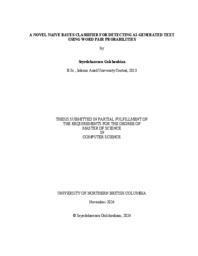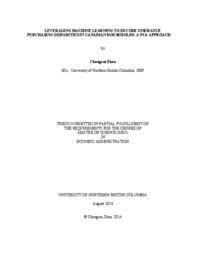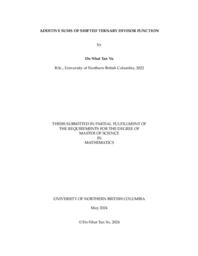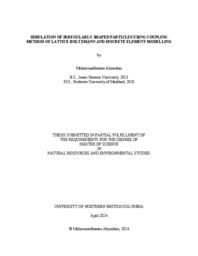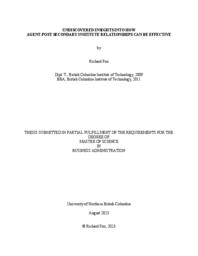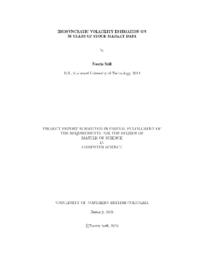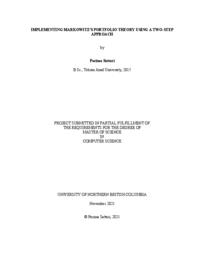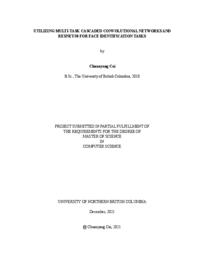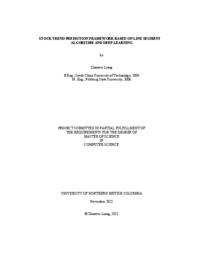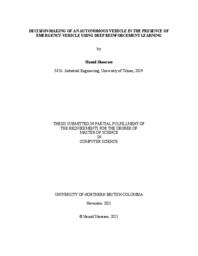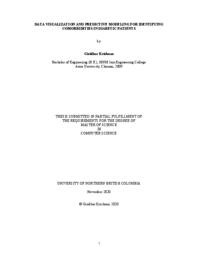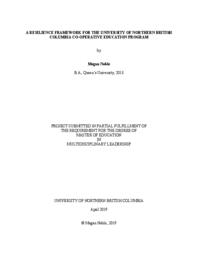Jiang, Fan
Person Preferred Name
Fan Jiang
Related Works
Content type
Digital Document
Description / Synopsis
The motivation behind this thesis arises from the high labor costs commonly
observed in Canadian communities, where residents are often forced to acquire multiple skills to cope with everyday needs. A web-based skill-exchange platform—where
two people trade services using their respective skills—would be valuable. However,
population sparsity often makes matching difficult. To address this challenge, we explore a novel approach to the sharing economy: a local mutual-aid platform. Within
this platform, users can consume services provided by others through virtual tokens,
while the only way to earn tokens is by offering services themselves. Since these tokens are purely virtual, mutual-aid activities do not incur legal liabilities, nor do
they risk creating full-time workers motivated solely by financial profit, which could
undermine the spirit of reciprocity.
On the implementation side, this thesis leverages an optimized Retrieval-Augmented
Generation (RAG) approach to enable query handling under sparse data conditions,
ensuring that even limited datasets can yield accurate and explainable recommendations. Furthermore, a self-developed distributed transaction manager based on
the Saga pattern ensures the integrity of user data across distributed environments,
supporting consistent balance updates, order confirmations, and notifications.
The prototype platform we developed demonstrates how combining modern AI
techniques with lightweight distributed systems can provide both practical utility
and long-term sustainability for local help ecosystems.
Origin Information
Content type
Digital Document
Origin Information
Content type
Digital Document
Origin Information
Content type
Digital Document
Origin Information
Content type
Digital Document
Origin Information
Content type
Digital Document
Origin Information
Content type
Digital Document
Origin Information
Content type
Digital Document
Origin Information
Content type
Digital Document
Origin Information
Content type
Digital Document
Description / Synopsis
In this study, the lattice Boltzmann method (LBM) and the discrete element method (DEM) are coupled to simulate the interaction between the fluid phase and irregularly shaped solid particles. For this purpose, the geometry of real particle shapes is represented as clumps of overlapping spheres and then simulated through a multi-sphere model in DEM and coupled with LBM using two open-access codes, LIGGGHTS and Palabos. The accuracy of the coupling method with clumps is demonstrated by simulating several benchmark cases and comparing them with the results from the literature. The coupled LBM-DEM method is then used to simulate the collapse and transport of submerged granular particles with four different irregular particle shapes in addition to sphere particle shapes to highlight the influence of grain morphology in the solidfluid interaction. To the authors’ best knowledge, it is the first time that LIGGGHTS and Palabos were used to simulate the LBM-DEM coupling of irregular particles. This study demonstrates the potential and accuracy of LBM-DEM method in simulating particles with irregular shapes. The research also provides insight into the importance of considering real shape particles in simulating granular flows in geotechnical engineering.
Origin Information
Content type
Digital Document
Description / Synopsis
Canadian universities are increasingly reliant on their recruitment agency partners (Agents) to achieve their international recruitment targets, and improve efficiency, flexibility, and ensure a sustainable market presence. It is unclear if the relationship between Post-Secondary Institutions (PSI) and Agents is mutually sustainable, or what factors promote a successful Agent-PSI relationship. This study explores the Agent-PSI relationship from Agents’ perspectives through the use of an analytical lens informed by supply chain theories. I aim to understand relational factors that drive satisfaction from agents’ perspectives. This study uses a theoretically driven model to analyze the survey data of 91 respondents to determine positive relational factors. Initial surveys were followed by semi-structured interviews of randomly selected respondents to provide additional analysis into data anomalies. The findings show that Relationship Trust led to improved Agent-PSI satisfaction, which leads to a mutually sustainable partnership.
Origin Information
Content type
Digital Document
Description / Synopsis
Financial markets require a great deal of decision making from the investors and market makers. One metric that can help ease the process of decision making is investment risk which can be measured in two parts; systematic risk and idiosyncratic risk. Clear understanding of the volatilities in each risk component can be a powerful signal in recognizing the right assets to maximize the investment returns. In this project, we focus on the idiosyncratic volatility values and provide an easy to use source code implementation that can pave the road for future studies on the relation between the idiosyncratic volatility and the chosen asset return values. Using our implemented source code, we pre-calculated the idiosyncratic volatility values for 31,198 members of NYSE, Amex and Nasdaq markets for the trade dates occurring between January 1963 and December 2019, and release this dataset along with our implemented source code. Additionally, we consider the application of machine learning techniques in predicting the idiosyncratic volatility values using the raw trade data to explore a data extension option for the future market trade records that have not yet occurred. We offer a deep learning based regression model and compare it with traditional tree-based methods on a small subset of our per-calculated idiosyncratic volatility dataset. Our analytical results show that the performance of the deep learning techniques is much more robust in comparison to that of the traditional tree-based baselines. However, more work needs to be done to be able to use a machine learning based model to reliably predict the idiosyncratic volatility values using the raw trade records.
Origin Information
Content type
Digital Document
Description / Synopsis
Numerous studies have provided insight into the challenges that investors may confront when making investments, such as allocating resources across a variety of stocks and securities. In response to these challenges, various portfolio theories have been developed. Among them, Modern Portfolio Theory (MPT), developed by Harry Markowitz, is one of the most famous. The purpose of this project is to investigate if MPT can be optimized in a way to achieve a higher return by constructing a fewer number of portfolios. We propose a two-step approach, and we compare the results with the existing theory. Rather than trying to find the optimal portfolio in one step, our two-step approach breaks the optimization process down into two steps, each of which involves a group of randomized portfolios. We find an initial optimal portfolio from the first group and then, in the second step, the final optimal portfolio will be determined from the second group of randomized portfolios which are generated based on the initial optimal portfolio from the first step. Our simulation proves that our two-step approach is more efficient and gives a higher rate of return comparing to the existing approach.
Origin Information
Content type
Digital Document
Description / Synopsis
In recent years, computer-animated characters have been designed more and more vivid and lifelike, and many of them are extremely similar to real people. Due to the high degree of similarity, some classical face recognition models are mixed up in the face identification process. For example, FaceNet model matches cartoon facial images with their similar real faces. In this case, some people may try to cheat by using virtual faces when they are identified by face recognition systems. To address this problem, this paper proposes an integrated approach that utilizes Multi-task Cascaded Convolutional Networks (MTCNN) and Resnet-50 models for the classification of real and cartoon faces (or virtual faces) of an input image before the face identification task. Our experiments show that the proposed integrated approach achieves better results on face identification tasks compared to some classical face recognition models that accomplish the tasks directly.
Origin Information
Content type
Digital Document
Description / Synopsis
Stock forecasting is a very complicated task due to its noise and volatile characteristics. How to effectively eliminate the noise has attracted attention from both investors and researchers. This report presents a novel de-noise technique named Line Segment Algorithm (LSA). Compared to those signal processing methods, LSA is based on the characteristic of financial time series. First, the algorithm identified the shape patterns of the historical stock price series and labeled them as turning points and false alarms. Then, a stock trend prediction framework was built and trained with the shape patterns extracted by the algorithm. Eventually, the model could predict whether a shape pattern is turning point or not. To evaluate its performance, experiments on the real stock data were carried out in LSTM and Random Forest, respectively. The results show that LSA demonstrates its effectiveness by better accuracy on prediction. It provides a new perspective for stock trend analysis and can be applied in the actual stock investment trading as well.
Origin Information
Content type
Digital Document
Description / Synopsis
Autonomous Vehicles are the future of road transportation where they can increase safety, efficiency, and productivity. In this thesis, we address a new edge case in autonomous driving when one autonomous vehicle is approached by an emergency vehicle and needs to make the best decision. To achieve the desired behavior and learn the sequence decision process, we trained our autonomous vehicle with the help of Deep Reinforcement Learning algorithms and compared the results with rule-based algorithms. The driving environment for this study was developed by using Simulation Urban Mobility as an open-source traffic simulator. The proposed solution based on Deep Reinforcement Learning has a better performance compared to the rule-based solution as a baseline both in normal driving situations and when an emergency vehicle is approaching.
Origin Information
Content type
Digital Document
Description / Synopsis
Diabetes is one of the most common chronic diseases in the world. Diabetic patients are also more susceptible to develop additional comorbidities over time even causing death. This makes it essential to identify the risk of developing comorbidities as early as possible for effective diabetes management and to reduce the burden on healthcare system. Large volumes of clinical data which has been collected over the years has potential to be translated into meaningful information to enable healthcare professionals gain insights into diabetic patient comorbidities. This research has two key contributions. First, an interactive diabetes dashboard is developed in which the data is integrated and shown in the form of visually appealing charts, graphs and tables. The dashboard displays aggregated results with drilldown capabilities to allow navigation at finer granularities of various metrics. Second, predictive models are built to forecast the likelihood of one of the three common comorbidities for diabetic patients – Benign Hypertension, Congestive Heart Failure, and Acute Renal Failure. The models use advanced data mining algorithms such as Logistic Regression, Neural Network, CHAID, Bayesian Network, Random Forest and Ensemble. Results from these models are also incorporated into an interactive assessment tool that has the ability to take user input and predict the likelihood of one of these comorbidities. Northern Health (NH) dataset consisting exclusively of diabetic patients is used for this research.
Origin Information
Content type
Digital Document
Description / Synopsis
As the world is flooded with data, the demand for mining data for useful purposes is increasing. An effective techniques is to model the data as networks (graphs) and then apply graph mining techniques for analysis. As on date, the algorithms available to count graphlets and orbits for various types of graphs and their generalizations are limited. The thesis aims to fill the gap by presenting a simple and efficient algorithm for 3-node graphlet and orbit counting that is generic enough to work for both undirected and directed graphs. Our algorithm is compared with the state-of-art algorithms and we show that in most cases our algorithm performs better. We demonstrate our algorithm in three case studies related to (i) enzyme and metabolite correlation network in corn, (ii) watershed governance networks, and (iii) patterns exhibited by co-expression networks of healthy and cancerous stomach cells.
Origin Information
Content type
Digital Document
Description / Synopsis
This project focused on fostering resilience amongst co-operative higher education students as a necessary skill for success in academia, the workforce, and in life. There are five chapters in this project. Chapter 1 outlines the significance, background, and purpose of the project, as well as my personal location as a researcher. Chapter 2 presents a thematic and study-by-study literature review that explores co-operative education and its models as well as ramifications of student resilience in higher education. The literature review identified major themes of academic, career, stress/emotional, and communication/social resilience common to co-operative higher education students. Chapter 3 discusses the research methods, which were based on an educational qualitative orientation and content and documentary research designs.
Origin Information


